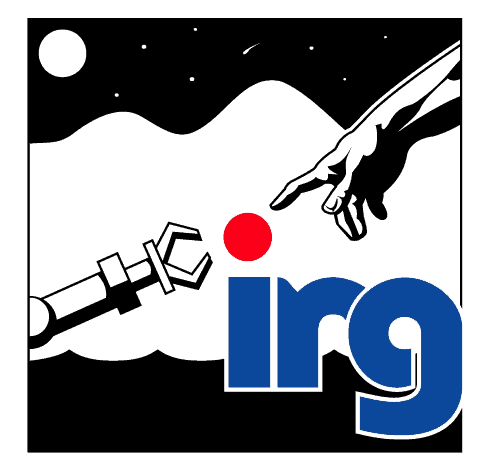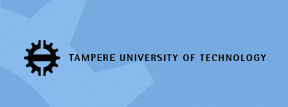Robotics
The Intelligent Robotics Group (IRG) explores extreme environments, remote locations, and uncharted worlds. We conduct applied research in computer vision, geospatial data systems, human-robot interaction, planetary mapping and robot software. (IRG brochure)
IRG operates the "K10" series of planetary rovers (slideshow, fact sheet). We conduct robotic field tests each year in planetary analog sites, such as Black Point Lava Flow and Haughton Crater.

The Robot Application Programming Interface Delegate (RAPID) is a set of software data structures and routines that simplify the process of communicating between multiple diverse robots and their command and control systems. RAPID is not intended to be an all-encompassing API for robot communication, but rather it’s a compatibility layer that permits tools and robotic assets to exchange data and information and allows operators to communicate with heterogeneous robots in a uniform way. RAPID is a compatibility layer that delegates information between robots that speak different languages.
The RAPID specification includes definitions and APIs for messages and services that support supervisory telerobotics operations over near-Earth time delay. RAPID is not a middleware specification, although safety and time-delay capabilities do imply requirements on implementing middleware systems. As currently implemented, the RAPID system can be considered a software reference implementation for remote operations.
For more information, contact David.S.Mittman@jpl.nasa.gov.

We use RTI DDS to develop applications in supervisory control as well as teleoperated and autonomous robot control. Our group receives funding from various sources including TEKES (The Finnish Funding Agency for Technology and Innovation, the main public funding organization for research, development and innovation in Finland), as well as the Academy of Finland, and the European Fusion Development Agreement (EFDA).

We use RTI DDS in a number of projects that build upon our core rover navigation software, RASM. The acronym stands for "Reliable Autonomous Surface Mobility". A site will be available in the coming months.
The research addresses navigation and autonomy for mobile robots with emphasis on scientific rovers operating in planetary terrain. The research is typified by the Life in the Atacama project ( http://www.frc.ri.cmu.edu/atacama ). Other projects can be found here: http://www.frc.ri.cmu.edu

We are a joint-project between several Australian universities- the University of Western Australia, Edith Cowan University and Flinders University.
Our team was organized to compete in the DSTO MAGIC 2010 Competition which is aimed at building a fleet of unmanned vehicles to complete a series of challenges within a three hour time period. The MAGIC2010 project is being run by DSTO, DARPA and RDECOM ensuring wide and high-level exposure for all participants and sponsors. More information about the competition can be found on the DSTO website: http://www.dsto.defence.gov.au/MAGIC2010/ .
Our team is called MAGICian/WAMbot (http://www.wambot.org/) the individual groups involved can be found below:
- Robotics at UWA (http://robotics.ee.uwa.edu.au/ )
- Artificial Intelligence and Software Engineering at ECU (http://research.scis.ecu.edu.au/aise/index.aspx )
- Walking Fish Group at UWA: (http://www.wfg.csse.uwa.edu.au/ )
As of August 2011 the development of the WAMBOT UGV system is largely complete (having been purposed for the MAGIC 2010 event held in November of last year). We do however continue work, and are anticipating a development to re-commence in the next 6-8 months.
We are using RTI DDS as the middleware for all of our integration purposes; between vehicle sub-systems as well as between (up to fourteen) vehicles and the five computer ground control station..
We have found a use for many RTI DDS features. Certainly core features, Persistence Service, and Routing Service. Debugging an autonomous ground vehicle system is very difficult (as with most distributed systems). The added complexities of dealing with emergent behaviour is particularly difficult to debug. Being able to capture and replay large data sets is very desirable (i.e. RTI Persistence Service). RTI Routing Service helps us support non TCP/IP interfaces through custom adapters. Alternatively, access to the RTI DDS SDK for developing custom transport plugins could provide us with the same extensibility features. RTI Monitoring tools are an absolute must for us and have been very useful in the past.


This project is creating a novel modular, distributed, and highly scalable computational/physical system for multi-disciplinary research and applications in micro-manufacturing.
The approach is a robotic-agent-based distributed information architecture of a type not found in industry today. The distributed nature of the agent-based system requires neither centralized control nor a centralized database for its operation, thereby avoiding communication and code complexity bottlenecks. The goals are to i) dramatically reduce design, program, and deployment times compared with state-of-the-art systems, ii) greatly increase mechanical precision over existing methods, and iii) greatly reduce floor space requirements.
The architecture is highly generic, and is applicable to multi-step flow-through production systems for domains such as micro-fabrication of small parts, assembly of meso- and micro-scale products, synthesis of discrete amounts of chemicals, and analysis of biological materials. The system addresses several difficult human-computer interface issues making the system more accessible to researchers and students and much easier to use compared with conventional approaches. In this work, collections of computational/physical agents are designed and programmed through a virtual 3D representation that is registered in space and synchronized in time with the actual micromanufacturing system. The system includes several automatic procedures such as calibration and multi-agent coordination which reduces programming tedium. We expect the developed system to be a suitable research platform where multiple, concurrent experiments can be run by faculty and students. The intention is also to provide a working system which can serve as an example for industry.


The group focuses on the control of manufacturing machine systems with the aid of 3-D robotic simulation systems. We are setting up a Mechatronic Systems Platform to study problems characterized by the need for an integrated approach of product and production development and the need for agility in manufacturing environments. RTI's RTI Data Distribution Service is used to integrate robotic simulation systems with other simulators and hardware devices.

Research in the Autonomous Systems Laboratory (ASL) focuses on networked systems of humans and robots interacting with an environment in the form of perception and acting. Our lab includes many types of robots (driving, walking, flying) and sensors (laser, vision, thermal). Human operators can act from computer terminals, laptops, or GPS equipped handheld computers. We are using RTI as part of our networking infrastructure in order to enable the sharing of information in a scalable manner, for our research experiments.

